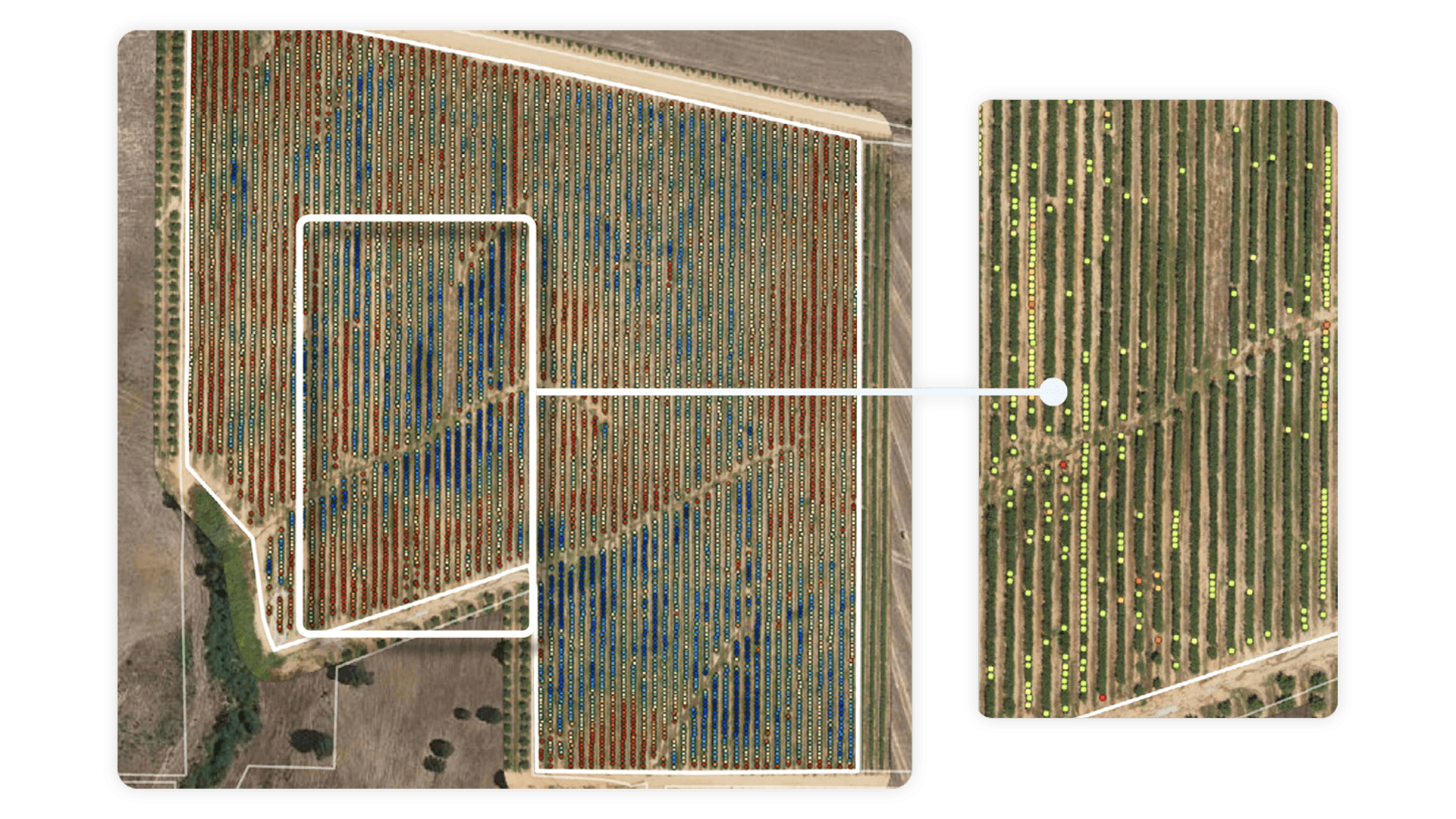Duck River Agriculture improves almond orchard uniformity
Duck River Agriculture, a leading almond producer in Portugal farming 3,000 hectares, uses Aerobotics’ high-resolution thermal imagery to improve orchard uniformity. Thermal layers revealed straight lines of low-transpiration trees linked to reduced canopy area and health. On investigation, the team discovered misplaced drip lines affecting 125 trees and an additional 18 ruptured lines. With these insights, Duck River Agriculture can manage irrigation distribution more precisely, protect orchard health, and move closer to achieving homogeneous, high-yielding orchards.
Crop type: Almonds
Location: Beira Baixa, Portugal
Identifying misplaced and ruptured drip lines on Duck River Farm using transpiration insights
Introduction
Duck River Agriculture is a leading almond producer and exporter in Portugal, farming a total of 3,000 ha. When it comes to farming practices and techniques, they believe the modern world has a lot to offer for achieving their goal to produce the highest yields from the fewest resources.
The Challenge
Duck River Agriculture’s main challenge is to obtain homogeneous orchards. Without an aerial view, agronomists at Duck River would go out into the field to identify areas of low performance; however, the process was time-consuming, and there was no assurance that they were identifying the right spots that needed attention.
It is crucial to know areas that are potentially at risk in order to manage an efficient, uniform irrigation distribution and achieve optimal yield.
The Solution
Using Aerobotics' high-resolution thermal images, it was clear to see long straight lines of low transpiration trees across the orchards, correlating with low canopy area and health.
The Duck River team went out to investigate one case and discovered that the drip line was misplaced, affecting 125 trees. An additional 18 ruptured lines were identified using Aerobotics’ thermal layers.

Clear correlation between the low transpiration of the blocked lines and NDRE (health).




